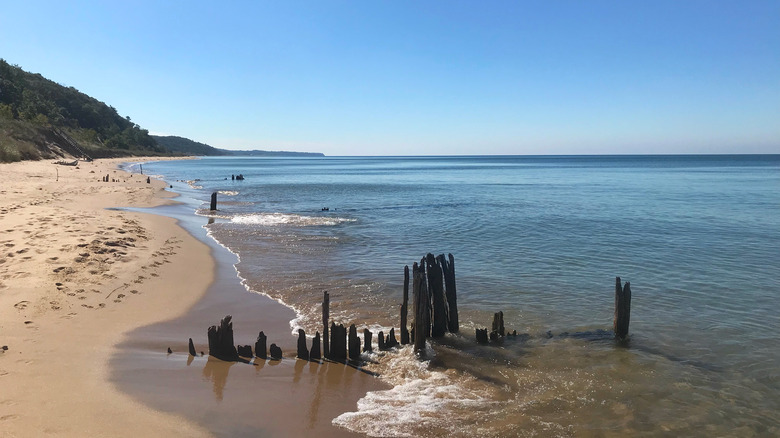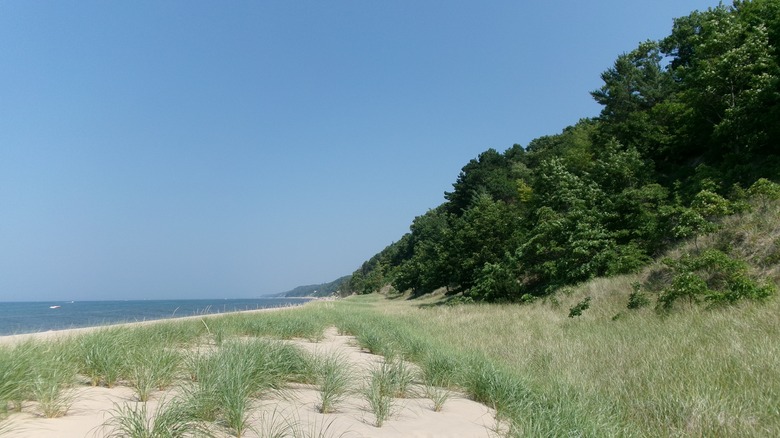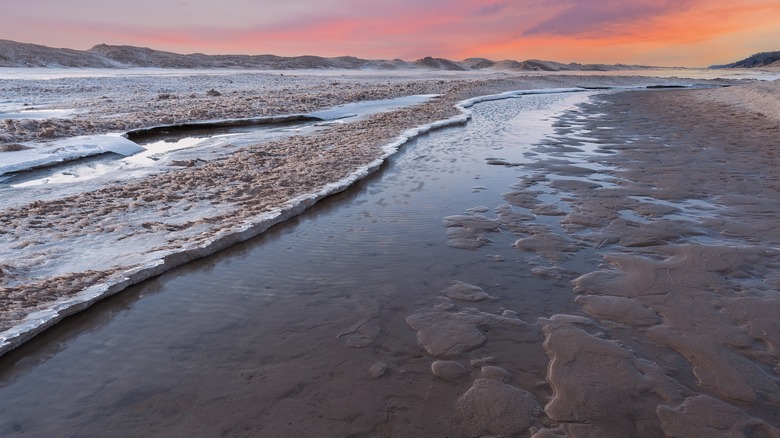Take In The Best Views Of Lake Michigan At This Underrated State Park
The state parks in America are wonders of nature. For a small fee, we have endless acres to explore, different environments full of flora and fauna, and a chance to escape our everyday lives to go out and touch some grass, dirt, or sand. If you happen to be in Michigan, there is a state park you absolutely can't miss. Saugatuck Dunes State Park along Lake Michigan has some of the best views you can find. The park is about 40 miles from Grand Rapids and has plenty to do with its dunes, forests, 13 miles of hiking trails, 300 acres of the Patricia Birkholz Natural Area (named after the former state senator) to explore, and 2.5 miles of shoreline with sandy dunes and hikes that take you right to it.
Saugatuck Dunes State Park is open all year, and there is something to do in every season, from swimming to cross-country skiing on the hiking trails. You are even permitted to take a metal detector into some areas. Who knows what you might find hiding under the ground? Let's take a look at what you need to know before you pay a visit to Saugatuck Dunes State Park and what you can do during your visit.
Beaching and birding at Saugatuck Dunes
Lake Michigan covers 22,300 sq mi, and this section of the park is gorgeous enough for the best Instagram travel selfies. The day-use Saugatuck Dunes State Park is open all year, and though you can't stay overnight, it's worth every moment of sunlight. To get in, you must have a recreation pass for Michigan State Parks, which you can purchase on the state's website.
Birders will love Saugatuck Dunes, as the area has over 350 species to observe. One to keep an eye out for is the Red-Wing Blackbirds, who sit in the marshy areas of the park. Other species to look for are Bald Eagles, Double-crested Cormorant, the Great Blue Heron, and the American Kestrel. There is a bird sighting list for the park, so you can check them off as you spot them.
Right near the parking area (which has a water station and a vault toilet for public use), you'll find the trailheads for two hikes that take you to the beach. (You can see the hiking map here.) You'll be able to take some glorious pictures of the sand dunes, which can be over 200 feet tall. If the weather is good, it's worth hiking with a bathing suit under your clothing and a towel to sit on so you can relax on the sand. Do note that if you see a red flag, the water isn't safe for swimming in that area.
Challenge yourself with some hiking.
As mentioned, you are permitted to take a metal detector and explore parts of the park, including some hikes. Some areas are prohibited, as seen on this park map, but the rest can be explored to your heart's content. Just remember that if you find anything, you have to show it to the park staff to be evaluated.
If hiking solo, especially for the first time, keep these safety tips in mind, as this can be a challenging experience. The North Trail is two miles long, though you can take one of two loops. The inner loop is a sand track in the pine forest, though the outer one gives you wider views and more dunes to see. This trail, marked in white, is difficult and steep — not ideal for beginners. Marked in brown, the shorter Beach Trail is strenuous but worth it, while the Livingston trail (marked in red) also takes you to the beach, but you'll be going over a number of steep hills. It has some good shade in case it's hot.
Then there is the South Trail, which is a 5.2-mile loop. This is another challenge — very hilly, with a lot of shade — but you get to go through the Patricia Birkholtz Natural Area. Don't forget to bring water, wear sunscreen, and make sure you have the best vacation hiking gear for your needs. If you visit in the winter, many of these trails are useable as ungroomed cross-country skiing paths.


